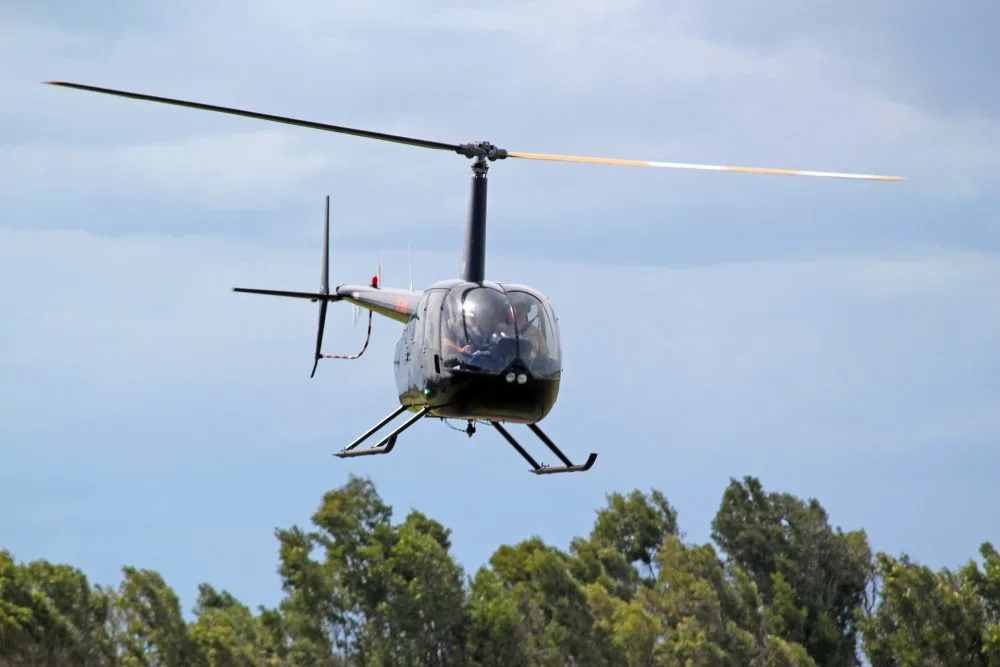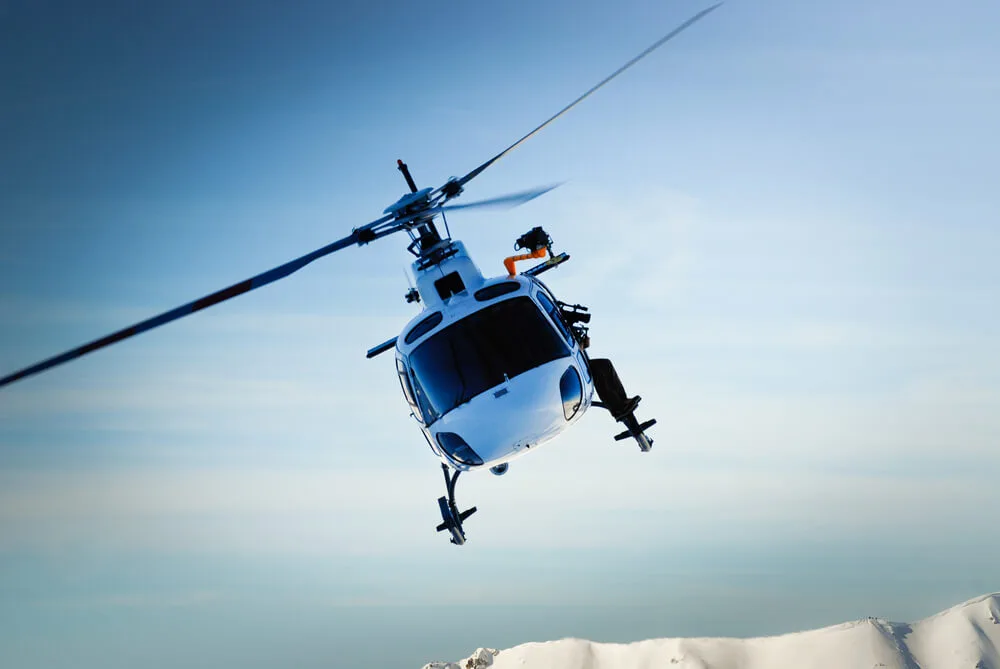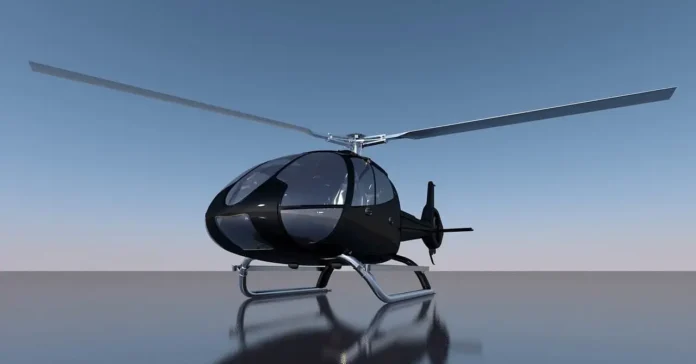Helicopters are some of the most versatile and dynamic aircraft in the skies, used for various purposes, from emergency medical evacuations to military missions and even scenic tours. Unlike airplanes, which require a runway for takeoff and landing, helicopters can take off and land vertically, making them ideal for accessing areas other vehicles can’t reach.
However, this ability to hover and maneuver in tight spaces has certain limitations, particularly regarding speed. In this article, we’ll explore how fast do helicopters travel, the factors influencing their speed, and how they compare to other aircraft types. Whether you’re curious about the capabilities of helicopters for specific tasks or just intrigued by the science behind their speed, this guide will give you a deeper understanding of helicopter performance.
Average Speed of Helicopters
Helicopters generally travel between 120 and 160 miles per hour (193 to 257 kilometers per hour), although the speed range can vary significantly based on the type and purpose of the helicopter. For instance, civilian helicopters typically operate around 130 mph (209 km/h) for general transport or sightseeing. On the other hand, military helicopters, which may prioritize speed for tactical missions, can often exceed 160 mph (257 km/h).
Some specialized helicopters, like those designed for long-range or high-speed operations, are built with more powerful engines and advanced rotor systems, allowing them to travel even faster. The record for the fastest helicopter currently belongs to the Sikorsky X2, a prototype that reached an impressive speed of 290 mph (467 km/h), highlighting the potential for advancements in helicopter technology.
In everyday use, though, helicopters are limited to their typical speed range due to factors like fuel efficiency, passenger comfort, and safety.
Factors Affecting Helicopter Speed

Helicopter speed is influenced by several key factors, including the aircraft’s design, engine power, and external conditions. Understanding these variables explains why two helicopters of similar size might have different performance capabilities. Here’s a closer look at the primary factors that affect helicopter speed:
Rotor Design
- Rotor Diameter: Larger rotors can generate more lift and thrust, which helps with higher speeds. However, they also increase drag, limiting the maximum speed a helicopter can reach.
- Rotor Blade Aerodynamics: The shape of the rotor blades plays a crucial role. Advanced designs that reduce drag and increase lift contribute to higher speeds.
- Rotor RPM (Revolutions per Minute): Higher RPMs generally lead to faster speeds. However, they also consume more power, which affects fuel efficiency.
Engine Power
A more powerful engine enables greater thrust, helping the helicopter to overcome air resistance and achieve higher speeds. Military and high-performance helicopters often have more powerful engines, allowing them to reach faster speeds. However, stronger engines also come with the tradeoff of increased fuel consumption.
Weather and External Conditions
- Wind and Air Resistance: Strong headwinds can significantly reduce a helicopter’s ground speed, while tailwinds can help increase it. Wind conditions, like crosswinds or turbulence, can also affect the helicopter’s stability and speed.
- Altitude: At higher altitudes, the air is thinner, which reduces the efficiency of the engine and the rotor blades. This can limit the helicopter’s speed.
- Temperature and Weather Conditions: Extreme weather, like rain or snow, can create drag or turbulence, slowing the aircraft down.
Pilot Skill and Experience
- Pilot Technique: Skilled pilots can adjust flight controls to optimize performance. This includes changing the collective pitch (for lift) and cyclic control (for directional movement) to maintain higher speeds.
- Flight Path Adjustments: Experienced pilots adjust based on weather, air traffic, and terrain to maintain speed while ensuring stability and safety. For instance, they might adapt altitude to avoid turbulent air or use optimal flight paths to minimize drag.
By understanding these factors, we can appreciate the complex interplay of forces that determine a helicopter’s speed and performance. While helicopters may be slower than fixed-wing aircraft, their unique ability to hover, take off, land vertically, and maneuver in confined spaces makes them indispensable tools in various applications.
Types of Helicopters and Their Speeds
Helicopters are designed with specific purposes, influencing their typical speeds and performance capabilities. Here’s a look at the different types of helicopters and the typical speeds they achieve:
Civilian Helicopters
Civilian helicopters are widely used for sightseeing tours, business transport, news reporting, and air taxis. These helicopters prioritize passenger comfort and efficient travel over long distances. Civilian models like the Bell 206 Jet Ranger or the Robinson R44 have cruising speeds of around 110 to 130 mph (177 to 209 km/h). Civilian helicopters usually balance speed with fuel efficiency and stability, making them ideal for routine travel without extreme speed requirements.
Military Helicopters
Military helicopters are built with advanced features that support high-speed travel and agility, essential for missions that require rapid deployment and responsiveness. Many military helicopters, like the AH-64 Apache and the UH-60 Black Hawk, have cruising speeds between 150 and 200 mph (241 to 322 km/h).
Military helicopters often use more powerful engines and advanced rotor systems, allowing them to achieve greater speeds than civilian models while maintaining the ability to carry heavy equipment and supplies.
Rescue and Medical Helicopters
Rescue and medical helicopters are designed to prioritize speed for quick response in emergencies. Equipped with medical supplies and specialized equipment, these helicopters often reach 140 to 160 mph (225 to 257 km/h) to save critical time in emergencies. Models like the Euro copter EC135 and the Airbus H145 are popular in medical air transport and are valued for their speed, reliability, and ability to safely handle various terrains and weather conditions.
High-Speed Helicopter Models
Certain helicopter models push the boundaries of speed through advanced designs and technology. The Sikorsky X2, a prototype high-speed helicopter, set a record by reaching a top speed of 290 mph (467 km/h) using a coaxial rotor system combined with a rear propeller to minimize drag. Another example is the Euro copter X3, which reached speeds of over 250 mph (400 km/h) by incorporating a hybrid design with additional forward-facing propellers.
These high-speed helicopters are examples of how new technology can enable helicopters to achieve speeds once thought impossible for rotary-wing aircraft. Each type serves a unique purpose, and their designs reflect the balance of speed, functionality, and safety required for their specific roles.
Why Helicopters Can’t Fly Fast
While helicopters are incredibly versatile and useful for many applications, their design limits their ability to reach high speeds compared to fixed-wing aircraft. Several factors contribute to why helicopters can’t fly as fast as airplanes:
- Aerodynamic Limitations: Helicopters rely on spinning blades (rotors) to generate lift, which creates more drag than fixed-wing designs. This drag, especially at higher speeds, reduces the efficiency of the helicopter, making it harder to maintain high velocities. As the speed increases, air resistance against the rotating blades becomes more pronounced, causing vibrations and instability.
- Mechanical Constraints: Helicopter engines and rotors are designed for vertical lift and hover, not for sustained high-speed flight. Increasing the speed requires significantly more power, which can overstrain the engine and rotor system. To overcome this, helicopters would need larger engines and more robust rotor systems, but this increases weight, further limiting speed.
- Structural Limitations: The rotor system’s design limits a helicopter’s maximum speed. As the rotor speed increases to higher levels, the tips of the blades can approach or even exceed the speed of sound, creating additional drag and noise and increasing the risk of damage. Helicopters are thus constrained by the need to avoid these conditions.
- Stability Issues: High speeds make it more difficult to maintain the stability and control needed for safe flight. The higher the speed, the more force is exerted on the aircraft’s structure, and small movements or turbulence can cause instability. Unlike fixed-wing aircraft, which benefit from lift generated by fixed wings, helicopters require continuous rotor pitch and engine power adjustments to maintain flight at higher speeds.
Due to these limitations, helicopters are highly efficient at low to moderate speeds but are not built for high-speed flights like airplanes. However, advancements in rotorcraft technology, such as coaxial rotors and hybrid designs, continue to improve their speed capabilities.
Fastest Helicopters

Helicopters are constantly evolving in speed and efficiency, with ongoing innovations pushing the limits of traditional rotorcraft capabilities. Here’s an overview of some of the fastest helicopters, including record-breaking models, military and experimental helicopters, and what the future might hold for helicopter technology.
Record-Breaking Speeds
Helicopters have steadily increased in speed over the decades, thanks to advancements in design and engineering. The Sikorsky X2 holds the record for the fastest helicopter, reaching a top speed of 290 mph (467 km/h) in 2010. This prototype achieved its high speed with a unique design that includes coaxial rotors (two rotors spinning in opposite directions) and a rear-facing propeller to provide additional forward thrust.
Another contender, the Euro copter X3, reached an impressive speed of 250 mph (400 km/h) by combining traditional rotor blades with two small propellers mounted on short wings.
Military and Experimental Helicopters
Many of the world’s fastest helicopters are military models, as speed can be a critical factor in tactical and rescue operations. For instance, the Westland Lynx, a British military helicopter, was recognized for its speed, reaching around 249 mph (400 km/h). The Boeing-Sikorsky RAH-66 Comanche, though ultimately cancelled, was another high-speed military project designed to reach speeds up to 200 mph (322 km/h) while providing stealth capabilities. Experimental helicopters like the SB-1 Defiant, a joint venture by Boeing and Sikorsky, continue to push speed boundaries with new technologies like counter-rotating rotors and pusher propellers to achieve both speed and maneuverability for military use.
Future Advancements in Helicopter Technology
Future developments in helicopter technology are focused on achieving even faster speeds without sacrificing safety or efficiency. Hybrid models, like tiltrotor aircraft (e.g., Bell V-280 Valor), can transition between helicopter-like vertical lift and airplane-style forward flight, reaching speeds exceeding conventional helicopters. Additionally, advances in rotor technology, aerodynamics, and lighter, more efficient materials will likely result in helicopters that can fly faster while conserving fuel. As technology progresses, we may see helicopters regularly achieving speeds beyond 300 mph (483 km/h), redefining the possibilities of rotary-wing aircraft.
These advancements illustrate the potential for helicopters to become faster, more versatile, and capable of fulfilling a broader range of missions in the coming years.
Is a Helicopter Safer Than a Plane?
The safety of helicopters versus planes depends on various factors, including the aircraft type, intended use, and the conditions under which it operates. Here’s a breakdown of the safety differences between helicopters and airplanes:
Crash Rates
Statistically, airplanes generally have a lower crash rate than helicopters. Commercial airplanes are equipped with advanced technology, and their design and operational protocols make them safer for long-distance travel. Helicopters, conversely, are more prone to accidents, particularly in non-commercial settings, such as private flights and military operations.
Types of Risks
- Helicopters: Helicopter accidents are often linked to mechanical failure, pilot error, and environmental factors like wind or weather. Helicopters are more susceptible to crashes when flying at lower altitudes, and their rotor systems can be more vulnerable to damage. Additionally, helicopters require more skilful navigation, especially in confined spaces or turbulent weather, increasing the risk.
- Planes: Airplanes generally face fewer mechanical risks and are designed to withstand various adverse conditions. Commercial planes are built with multiple redundancies in systems (e.g., engines, navigation) to ensure they can continue flying safely even in the event of one system failure. However, commercial aeroplane crashes, though rare, tend to have more severe consequences due to the higher speed, altitude, and several people involved.
Emergency Landings: One advantage helicopters have over planes in certain situations is the ability to land in a confined space. If a helicopter experiences engine failure or other issues, it can glide down to the ground vertically, minimizing the risk of a catastrophic crash. In contrast, if an airplane loses power at high altitudes, it has less Being able for movement and must rely on glide capability to reach an airport or open area.
Commercial Operations: Airports are generally considered safer in terms of commercial air travel. Airlines follow strict safety protocols, and the aviation industry is heavily regulated with regular maintenance checks and pilot training. Helicopter operations may sometimes adhere to different safety standards, especially in non-commersome, private flights.
Technology and Design Improvements: Helicopters and airplanes have advanced significantly regarding safety technology. Modern helicopters have better control systems, collision avoidance technology, and stability enhancements. Likewise, airplanes have incorporated safety features like advanced autopilot systems and more resilient airframes.
Conclusion
In conclusion, helicopters may be slower than fixed-wing aircraft but offer unmatched versatility and maneuverability. While the typical speed range for most helicopters falls between 120 to 160 mph, specialized models can achieve much faster speeds, with prototypes like the Sikorsky X2 reaching up to 290 mph. Understanding the factors influencing helicopter speed, including rotor design, engine power, weather conditions, and pilot skill, provides valuable insights into the capabilities and limitations of these remarkable aircraft.
Despite their limitations, helicopters continue to evolve with technological advancements, pushing the boundaries of speed and performance. Whether for civilian, military, or rescue operations, helicopters remain essential for their unique capabilities, offering access to areas other aircraft cannot reach. With ongoing innovations, the future of helicopter travel promises even greater possibilities in terms of both speed and versatility.
Read More: Travel In Jinzhou Gulpuffs Next Travel Destination Awaits!



